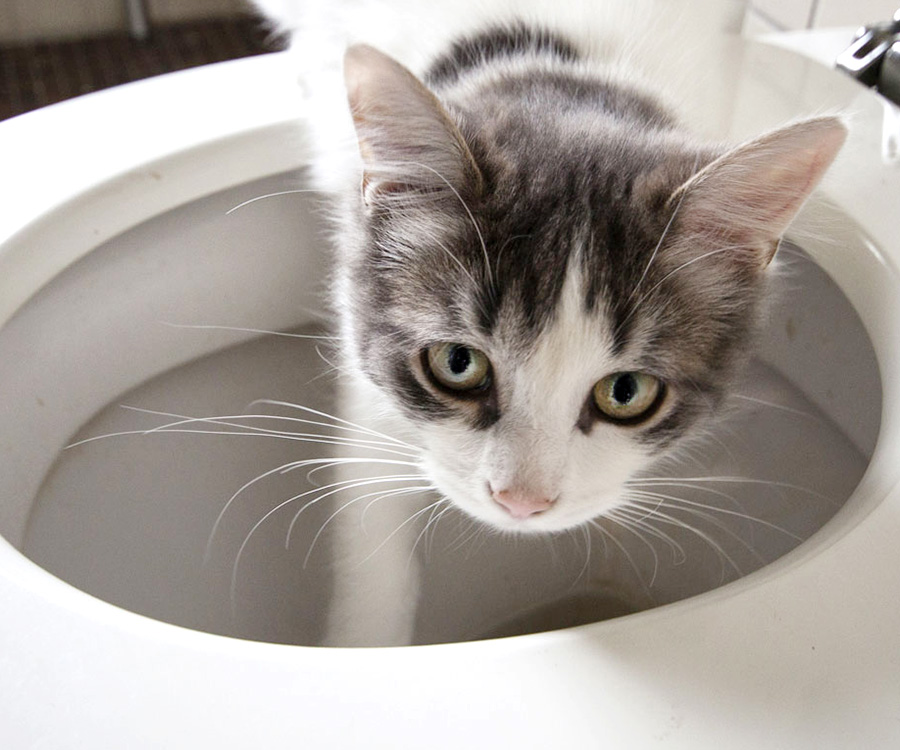Avoid Flush Cat Poop Down Your Toilet - Safeguard Your Pipes Infrastructure
Avoid Flush Cat Poop Down Your Toilet - Safeguard Your Pipes Infrastructure
Blog Article
What are your opinions about Can You Flush Cat Poop Down The Toilet??

Introduction
As cat proprietors, it's important to be mindful of just how we throw away our feline friends' waste. While it may appear hassle-free to purge cat poop down the commode, this practice can have detrimental consequences for both the atmosphere and human wellness.
Alternatives to Flushing
Thankfully, there are much safer and more responsible ways to throw away pet cat poop. Consider the following options:
1. Scoop and Dispose in Trash
One of the most usual approach of getting rid of feline poop is to scoop it into a biodegradable bag and throw it in the garbage. Be sure to use a devoted litter scoop and throw away the waste immediately.
2. Usage Biodegradable Litter
Choose biodegradable cat litter made from materials such as corn or wheat. These litters are environmentally friendly and can be securely disposed of in the garbage.
3. Bury in the Yard
If you have a yard, consider hiding pet cat waste in an assigned location away from veggie gardens and water resources. Make certain to dig deep sufficient to avoid contamination of groundwater.
4. Set Up a Pet Waste Disposal System
Purchase a family pet garbage disposal system especially made for pet cat waste. These systems utilize enzymes to break down the waste, reducing smell and ecological influence.
Wellness Risks
Along with ecological issues, flushing pet cat waste can additionally posture wellness risks to humans. Cat feces might consist of Toxoplasma gondii, a parasite that can create toxoplasmosis-- a potentially severe ailment, especially for expecting females and people with weakened body immune systems.
Ecological Impact
Flushing pet cat poop presents dangerous pathogens and bloodsuckers into the water system, presenting a significant threat to water communities. These contaminants can adversely impact aquatic life and compromise water quality.
Verdict
Responsible pet dog ownership prolongs beyond providing food and sanctuary-- it also entails appropriate waste monitoring. By refraining from purging cat poop down the commode and opting for different disposal techniques, we can lessen our environmental impact and secure human health and wellness.
Why Can’t I Flush Cat Poop?
It Spreads a Parasite
Cats are frequently infected with a parasite called toxoplasma gondii. The parasite causes an infection called toxoplasmosis. It is usually harmless to cats. The parasite only uses cat poop as a host for its eggs. Otherwise, the cat’s immune system usually keeps the infection at low enough levels to maintain its own health. But it does not stop the develop of eggs. These eggs are tiny and surprisingly tough. They may survive for a year before they begin to grow. But that’s the problem.
Our wastewater system is not designed to deal with toxoplasmosis eggs. Instead, most eggs will flush from your toilet into sewers and wastewater management plants. After the sewage is treated for many other harmful things in it, it is typically released into local rivers, lakes, or oceans. Here, the toxoplasmosis eggs can find new hosts, including starfish, crabs, otters, and many other wildlife. For many, this is a significant risk to their health. Toxoplasmosis can also end up infecting water sources that are important for agriculture, which means our deer, pigs, and sheep can get infected too.
Is There Risk to Humans?
There can be a risk to human life from flushing cat poop down the toilet. If you do so, the parasites from your cat’s poop can end up in shellfish, game animals, or livestock. If this meat is then served raw or undercooked, the people who eat it can get sick.
In fact, according to the CDC, 40 million people in the United States are infected with toxoplasma gondii. They get it from exposure to infected seafood, or from some kind of cat poop contamination, like drinking from a stream that is contaminated or touching anything that has come into contact with cat poop. That includes just cleaning a cat litter box.
Most people who get infected with these parasites will not develop any symptoms. However, for pregnant women or for those with compromised immune systems, the parasite can cause severe health problems.
How to Handle Cat Poop
The best way to handle cat poop is actually to clean the box more often. The eggs that the parasite sheds will not become active until one to five days after the cat poops. That means that if you clean daily, you’re much less likely to come into direct contact with infectious eggs.
That said, always dispose of cat poop in the garbage and not down the toilet. Wash your hands before and after you clean the litter box, and bring the bag of poop right outside to your garbage bins.
https://trenchlesssolutionsusa.com/why-cant-i-flush-cat-poop/

Do you enjoy reading up on How to Dispose of Cat Poop and Litter Without Plastic Bags? Make feedback directly below. We'd be glad to hear your responses about this content. In hopes that you come back again before long. If you please take the time to share this content if you liked it. Many thanks for your time spent reading it.
Source This Article Report this page